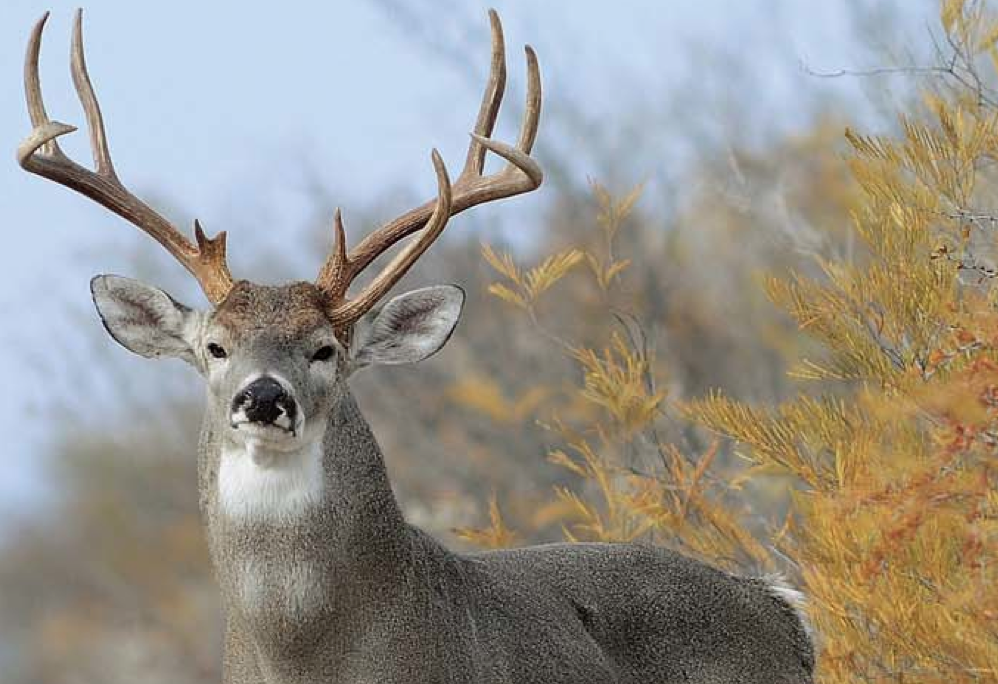
Most deer hunters agree that older bucks are much smarter than younger males and harder to hunt. Now, that’s been quantified.
That was one of the studies revealed at the 2014 Southeast Deer Study Group Meeting, held in February at Athens, Ga., and attended by 296 deer biologists from across the country. Using fine-scale movement data of whitetails from GPS-collared bucks, Auburn graduate student Clint McCoy and his associates focused on how adult white-tailed bucks react to hunting pressure. They wanted to see if older males are actually harder to hunt because they’re smarter than younger bucks or are simply rare, making it more difficult for hunters to encounter them.
By Bob Zaiglin
McCoy and his associates captured and GPS-collared 37 bucks during a three-year period in South Carolina. The collars recorded buck locations every 30 minutes from late August through November, which encompassed most of the deer hunting season. Besides the variables of date, age and time, GPS locations were assigned attributes such as distance to the nearest hunting stand and whether the animal was on a food plot, bait site or hunting stand buffer.
The results showed that adult bucks were about 55 yards farther from hunting blinds on the final day of the study versus the first and 17.5 yards farther from stands during daylight than dark. In comparison, yearling bucks were 16.7 yards closer to hunting stands at t ehend of the study compard to the beginning and 15.1 yards closer to hunting stands during daylight versus dark.
Researchers also found that adult bucks were 80 percent less likely to visit bait sites during daylight at the end of the study. Yearlings were twice as likely as adults to use bait sites during daylight.
Check out this clip from Deer & Deer Hunting TV about bucks making rubs:
Science vs. Popular Opinion
The theme of the 2014 meeting was the politics of deer management — balancing public interest and science. All biologists agree that wildlife management decisions should be based on science. However, decisions are increasingly affected by public opinion, which is often backed up politically, making it more challenging for wildlife agencies to use science-based facts to address deer management problems and concerns.
From insurance agencies to average citizens to the deer farming industry, the ability to manage deer herds is continually being strained, and the next generation of managers must figure out how to manage deer in a way that’s beneficial to the public resource and acceptable to its constituents. As important as science is to deer, management must take a common sense approach.
Recruitment Issues
Deer managers also are concerned about hunter recruitment. Although recent statistics documented a slight increase in United States hunter numbers, that might not be the case in Virginia, according to Matt Knox of the Virginia Department of Game and Inland Fisheries.
According to Knox and his associates, licensed big-game hunters have decreased significantly in Virginia the past two decades, from 294,000 in 1993 to 223,000 in 2012. This represented an overall decline of 24 percent and an annual decline of 1.2 percent. Based on those statistics, there may only be about 188,000 big-game hunters by 2023 and as few as 133,000 in 2038.
Such declines have a significant negative effect on department finances and, more important, Virginia’s ability to manage the state’s deer herd. The lone positive aspect Knox addressed was the increasing number of women who are hunting.

Bowhunting Recovery Rates
The effectiveness of fixed broad- heads versus mechanical broadheads was investigated by Andy Pederson and his colleagues at the Naval Support Facility Indian Head, at Indian Head, Md. The objective of their study was to evaluate deer recovery metrics of bowhunters shooting compound bows or crossbows with fixed-blade broad- heads, which have no moving parts, versus mechanical broadheads, which have moving parts.
Information was gathered daily from archers participating in the managed hunting program at the Naval Support Facility Indian Head. All participants were required to pass the International Bowhunters Education Program and an annual pre-season shooting proficiency test.
Since the beginning of the study in 1989 until the 2012 season— 24 seasons — 209 bowhunters logged 35,011 hours, recovering 1,083, or 83.6 percent, of the 1,296 deer recorded as being hit. The choice of weapon was found to have no effect on recovery rates, with recovery rates for compounds and crossbows at 83 and 89 percent, respectively.
However, the type of broadhead affected recovery rates for crossbow and compound bow users. Investigators recommended using mechanical broadheads, especially at areas in the public eye.
Coyote Studies
The coyote and its potential impact on Eastern deer herds remains a big concern among biologists, with seven of the 33 of presentations, or 21 percent, focused on coyotes.
According to University of Georgia graduate student Joseph W. Hinton, rabbits, small mammals and white-tailed deer represented about 90 percent of prey remains found in coyote scat. Birds, fruit, insects and human refuse represented less than 8 percent of the remains found in scat.
White-tailed deer represented about 30 percent of the coyote’s diet, and deer were found to be consumed most during winter. Researchers also found that coyote weight and the season were important factors in a coyote’s diet. The positive relationship between coyote consumption of deer and coyote body weight implies that body size is important for coyotes to acquire deer. However, it’s important to recognize that coyotes seldom hunt alone but in packs, which might eclipse the impor- tance of individual predator size when adult deer are targeted.
Do Penned Deer Pay?
Historically, the release of wild deer by state agencies played a significant role in aiding extremely low populations. Today, however, some believe that the release of penned deer, especially bucks with highly desirable antlers, could augment desirable traits in herds in which less-than-desirable antler traits are the norm.
 Steve Demarais of Mississippi State University and his associates investigated the impact of releasing pen-raised bucks to increase antler size in wild deer populations. The investigators modeled their study using a livestock model with no ingress/egress to represent a fenced property, and a model developed at the Mississippi State Deer Lab that included 10 percent dispersed/immigration to represent a free-ranging population. The model included the release of fawns from pens with an antler distribution averaging 200 gross Boone and Crockett inches at five intensities relative to the total population (1, 5, 10, 25 and 50 percent replacement of the existing native population).
Steve Demarais of Mississippi State University and his associates investigated the impact of releasing pen-raised bucks to increase antler size in wild deer populations. The investigators modeled their study using a livestock model with no ingress/egress to represent a fenced property, and a model developed at the Mississippi State Deer Lab that included 10 percent dispersed/immigration to represent a free-ranging population. The model included the release of fawns from pens with an antler distribution averaging 200 gross Boone and Crockett inches at five intensities relative to the total population (1, 5, 10, 25 and 50 percent replacement of the existing native population).
After recruitment, 2,000 animals were sustained by removing individuals using natural and harvest mortality. The researchers reported on the results 10 years after the release of deer.
Basically, the study found the effects of releasing pen-raised deer into native populations to be limited less than the 25 percent release rate — that is, replac- ing 25 percent of the native population. They also indicated that a replacement rate of 5 percent of the population (100 pen-reared deer) increased the Boone and Crockett score by only 0.8 inches. With 500 pen-raised deer released into a free-ranging population (25 percent replacement rate) the Boone and Crockett score was elevated by an aver- age of 12 inches.
Releasing pen-raised deer into a confined herd was twice as effective as releasing them onto open range, as a replacement of only 10 percent (200 deer) elevated the score by 12 inches.
Based on an assumed average $2,792 cost of a fawn, the cost per increase of one inch of antler was $115,000 in a free-ranging population and $56,000 in a fenced herd.
Although the phenotypic characteristics of some pen deer, particularly their antlers, are extremely attractive to some sportsmen, release programs would be cost prohibitive for state agencies and the public.
+++++
Maximize Your Deer Season Planning
 From Deer & Deer Hunting Magazine, the 2016 Whitetails Wall Calendar features the work of deer researchers Wayne Laroche and Charlie Alsheimer, who reveal the 2016 whitetail rut prediction, based on years of lunar cycle research. Utilize this deer moon phase calendar to find out which days the deer will be seeking and chasing so you can time the rut for the best time to hunt.
From Deer & Deer Hunting Magazine, the 2016 Whitetails Wall Calendar features the work of deer researchers Wayne Laroche and Charlie Alsheimer, who reveal the 2016 whitetail rut prediction, based on years of lunar cycle research. Utilize this deer moon phase calendar to find out which days the deer will be seeking and chasing so you can time the rut for the best time to hunt.

